Lucasian Professor of Mathematics
The Lucasian Chair of Mathematics (/luːˈkeɪziən/) is a mathematics professorship in the University of Cambridge, England; its holder is known as the Lucasian Professor. The post was founded in 1663 by Henry Lucas, who was Cambridge University's Member of Parliament in 1639–1640, and it was officially established by King Charles II on 18 January 1664. It was described by The Daily Telegraph as one of the most prestigious academic posts in the world[1] and its former holders include Isaac Newton, Charles Babbage, George Stokes, Joseph Larmor, Paul Dirac and Stephen Hawking.
History
Lucas, in his will, bequeathed his library of 4,000 volumes to the university and left instructions for the purchase of land whose yielding should provide £100 a year for the founding of a professorship.[2]
The current and 19th Lucasian Professor is Michael Cates, starting from 1 July 2015.[3] The previous holder of the post was theoretical physicist Michael Green who was a fellow in Clare Hall. He was appointed in October 2009,[4] succeeding Stephen Hawking, who himself retired in September 2009, in the year of his 67th birthday, as required by the university.[5] Green holds the position of Emeritus Lucasian Professor of Mathematics.
List of Lucasian professors
| # | Year of appointment | Portrait | Name | Speciality | Tenure (years) |
|---|---|---|---|---|---|
| 1 | 1663 | 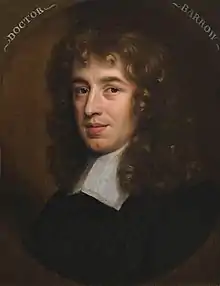 |
Isaac Barrow (1630 – 1677) |
Classics and mathematics | 6 |
| 2 | 1669 | 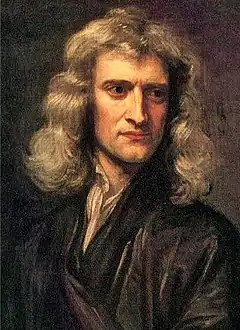 |
Isaac Newton (1643 – 1727) |
Mathematics and physics | 33 |
| 3 | 1702 |  |
William Whiston (1667 – 1752) |
Mathematics | 9 |
| 4 | 1711 | 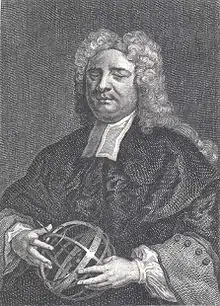 |
Nicholas Saunderson (1682 – 1739) |
Mathematics | 28 |
| 5 | 1739 | 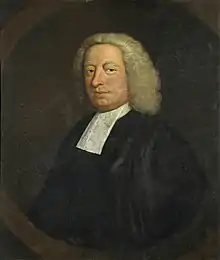 |
John Colson (1680 – 1760) |
Mathematics | 21 |
| 6 | 1760 | 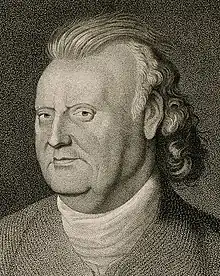 |
Edward Waring (1736 – 1798) |
Mathematics | 38 |
| 7 | 1798 | 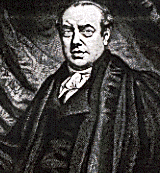 |
Isaac Milner (1750 – 1820) |
Mathematics and chemistry | 22 |
| 8 | 1820 |  |
Robert Woodhouse (1773 – 1827) |
Mathematics | 2 |
| 9 | 1822 | 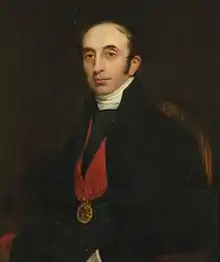 |
Thomas Turton (1780 – 1864) |
Mathematics | 4 |
| 10 | 1826 | 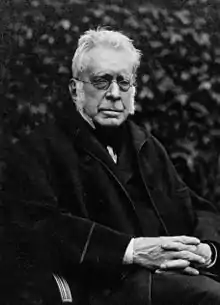 |
George Biddell Airy (1801 – 1892) |
Astronomy | 2 |
| 11 | 1828 | 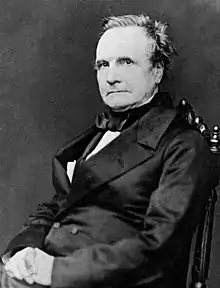 |
Charles Babbage (1791 – 1871) |
Mathematics and computing | 11 |
| 12 | 1839 |  |
Joshua King (1798 – 1857) |
Mathematics | 10 |
| 13 | 1849 | 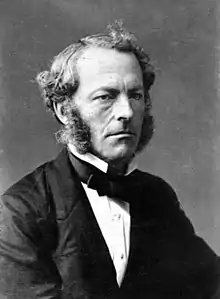 |
George Gabriel Stokes (1819 – 1903) |
Physics and fluid mechanics | 54 |
| 14 | 1903 | 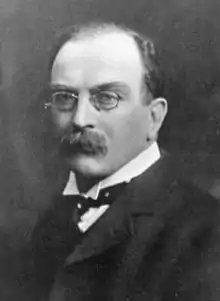 |
Joseph Larmor (1857 – 1942) |
Physics | 29 |
| 15 | 1932 |  |
Paul Dirac (1902 – 1984) |
Physics | 37 |
| 16 | 1969 | James Lighthill (1924 – 1998) |
Fluid mechanics | 10 | |
| 17 | 1979 | 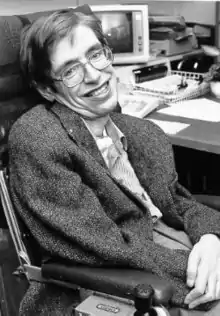 |
Stephen Hawking (1942 – 2018) |
Theoretical physics and cosmology | 30 |
| 18 | 2009 |  |
Michael Green (born 1946) |
String theory | 6 |
| 19 | 2015 |  |
Michael Cates (born 1961) |
Statistical mechanics of soft condensed matter | current |
Cultural references
In the final episode of the science-fiction television series Star Trek: The Next Generation, one of the main characters, the android Data, holds the Lucasian Chair in the late 24th century.[6][7][8]
References
- "Michael Green to become Lucasian Professor of Mathematics". The Daily Telegraph. Retrieved 11 December 2012.
- Bruen, Robert (May 1995). "A Brief History of The Lucasian Professorship of Mathematics at Cambridge University". LucasianChair.org. Archived from the original on 23 December 2013. Retrieved 9 July 2017.
- "Cambridge University Reporter No 6380". 18 March 2015. Retrieved 19 March 2015.
- "Stephen Hawking's successor as Lucasian Professor of Mathematics: Michael Green". timesonline.typepad.com. 20 October 2009. Archived from the original on 18 February 2010. Retrieved 9 July 2017.
- "Hawking gives up academic title". BBC News. 30 September 2009. Retrieved 1 October 2009.
- Orrman-Rossiter, Kevin. "From Newton to Hawking and beyond: a short history of the Lucasian Chair". The Conversation. Retrieved 25 February 2016.
- "Michael Zaslow, First "Redshirt" on Star Trek, The Original Series, Died 11 Years Ago from ALS". The ALS Association Greater New York Chapter. Retrieved 25 February 2016.
- "Video: How String Theory scaled up". phys.org. Retrieved 25 February 2016.
Further reading
- Kevin Knox and Richard Noakes, From Newton to Hawking: A History of Cambridge University's Lucasian Professors of Mathematics ISBN 0-521-66310-5